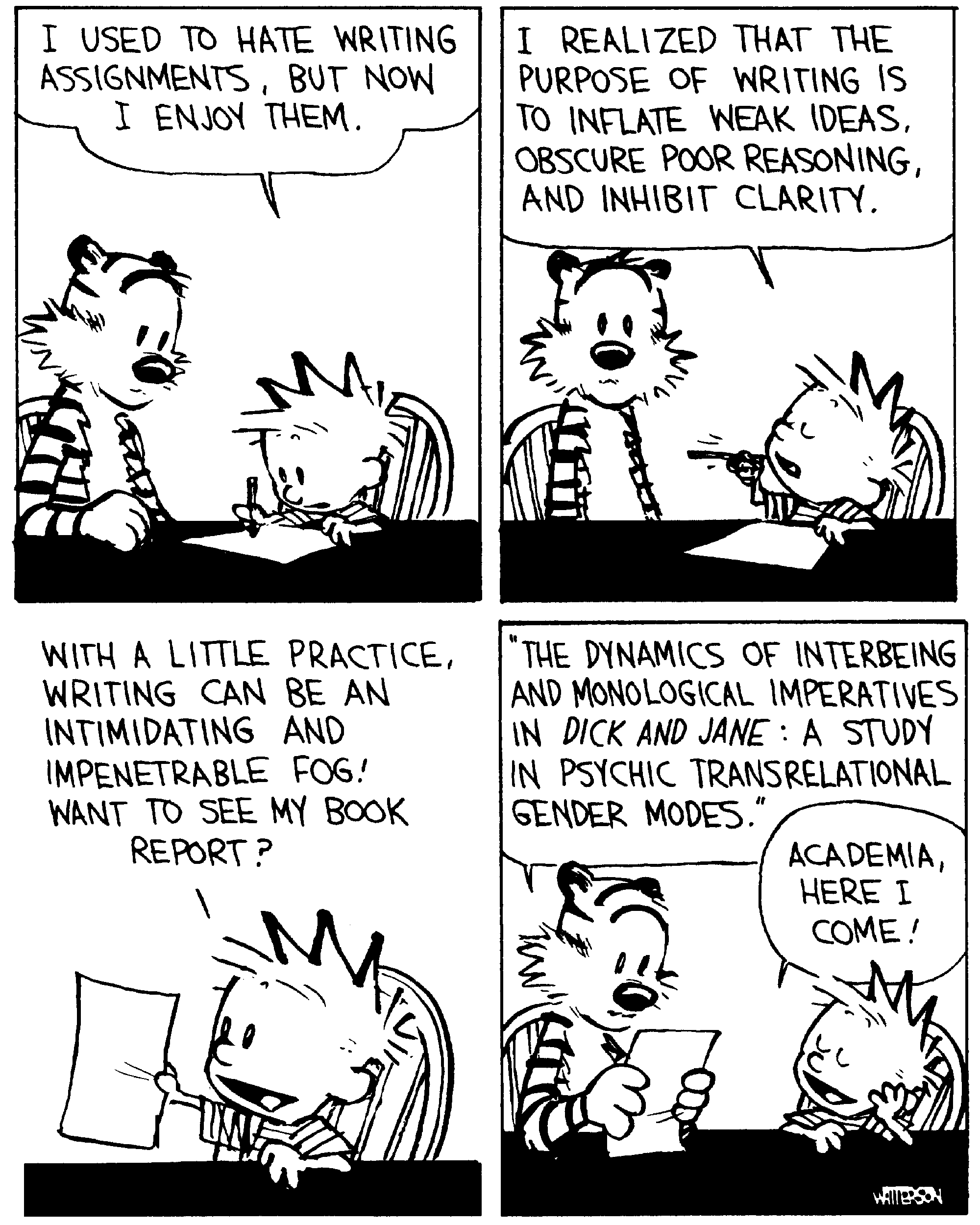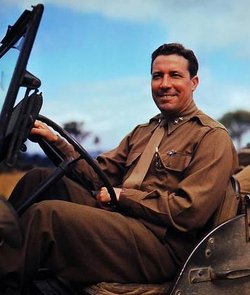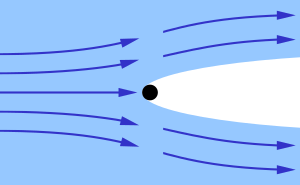If the tanks succeed, then victory follows.
Heinz Guderian
I don't think you can in any way export culture with guns or tanks.
Bernardo Bertolucci

TARIAN IS SIMILAR TO SLAT ARMOR BUT 85% LIGHTER THAN STEEL
Developed by UK firm Amsafe, Tarian cloth is capable of repelling armor-piercing anti-tank warheads by creating a ‘cushion’ between the vehicle’s exterior and typical armor plating, thereby triggering the explosive early and dispersing the force of the blast across the existing armor.
Traditional slat or metal-bar protection has a similar effect and through it is relatively light in comparison to the primary armor-plating of a vehicle, still has a detrimental effect on mobility and load-capacity. Being 50% lighter than aluminum cage armor and 85% lighter than steel cage options, Tarian (Welsh for "shield") reduces the chance of overloading the vehicle and means that more equipment can be carried and further precautions taken to ensure the safety of the passengers.
See the full report at www.gizmag.com

The question of how best to fight is one I give considerable thought to. Tanks have been much on my mind recently (for the normal reasons where I am concerned—a book, and because I’m just plain interested).
The range, lethality and accuracy of modern anti-tank missiles is such that more than a few believe the day of the tank—even main battle tanks—is over. That impression will be re-enforced if you actually see such a missile in action. That seemingly indestructible bemoth is literally blown apart, as like as not the heavy turret (over 20 tons) is flung into the air as if weightless, and what is left is engulfed in a fireball.
Tankers call such a hit a ‘catastrophic kill.’ It is well named.
Destruction is total. Or such is the theory. It may, indeed, be the practice—Soviet tanks have a poor track record—but Western tanks have proven to be impressively survivable.

ISRAELI MERKAVA 4 WINDBREAKER
EQUIPPED WITH TROPHY ACTIVE DEFENSE SYSTEM
By Western tanks, I mean the U.S.M1A2 Abrams, the British Challenger 2, the German Leopard 2, the French Leclerc 2, and the Israeli Merkava.4
How can this be?
- SUPERIOR COMPOSITE ARMOR. Back in the Sixties, the British originated Chobham armor—a matrix of high hardness steel and ceramics (and possibly other materials). Boron carbide is one such ceramic. The exact nature of such armor is classified. It has proved to be effective against both shaped charges and kinetic energy penetrators. It continues to evolve.
- PASSIVE UP-ARMORING. This takes various forms. Typically it consists of additional armor in the form of tiles. This allows some advantage to be taken of the very latest developments. The downside is that it adds weight. Tracked vehicles are normally better at handling such increased weight because they dissipate it.
- SLAT ARMOR. Typically this is a metal cage which causes RPGs, in particular, to pre-ignite thus causing the hollow charge to be ineffective. Such armor adds weight.
- ACTIVE UP-ARMORING. Explosive reactive armor has high brisance (explodes very fast) and disrupts the effect of the incoming projectile. It is effective but can only deal with one hit in the same place. Modern missiles increasingly use tandem warheads
- ACTIVE DEFENSE. These anti-missile protection systems are relatively new and are becoming increasingly effective. The Israeli Trophy system—which uses a shotgun-like blast—has been proven in combat and works well. It can be defeated by using missiles with a decoy incorporated but they are not yet in general use.
- INCREASINGLY ACCURATE & EFFECTIVE FIREPOWER—outranging and otherwise outgunning the enemy. Vastly improved 24 hour capable sighting systems combined with laser range-finding make first shot kills at extreme ranges increasingly possible.
- IMPROVED SITUATIONAL AWARENESS. Improved situational awareness. Traditionally, a buttoned-down tank has left both driver and commander with very restricted vision. Miniature high resolution cameras linked to internal monitors now make 360 degree vision possible.
- CONCEALABILITY. A variety of techniques is now being used to minimize detectability. These include improved camouflage, methods that minimize a tank’s heat signature, and methods which make a tank look like something else.
- IMPROVED TRACKS. Tracks offer excellent performance, both on and off rods, but traditionally have worn out quickly—sometime in only a few hundred miles. Wear tends to be surface dependent. New track design is increasing track durability to several thousand miles though it remains less than desirable. Rubber tracks offer numerous advantages though are not yet strong enough for full weight main battle tanks.
- TACTICS. How tanks are fought makes a great difference to survivability. For instance, single tanks are more vulnerable than when mutually supporting. Terrain makes a great difference.
- COMMAND OF THE AIR. The U.S. in particular, the the West in general, have a huge advantage in this regard. Thanks to increasingly accurate PGMs (Precision Guided Munitions)tanks are extremely vulnerable to air attack even whole moving.
- COMBINED ARMS SUPPORT. Infantry and artillery support contribute greatly to tank survivability.
The weaknesses of main battle tanks are:
- SIZE & WEIGHT. Main battle tanks have a very high degree of mobility in terms of ground surfaces, but their size and weight mean that they cannot fit through narrow streets and they are far too heavy for many bridges.
- FUEL CONSUMPTION/LOGISTICAL SUPPORT. This is the Achilles Heel of the M1A2 Abrams in particular. An Abrams doesn’t operate on a miles per gallon basis—it is more gallons per mile. Also, an Abrams burns fuel whether moving or not. In effect—very roughly—an Abrams requires 300 gallons every 24 hours—which means a considerable logistics tail of highly vulnerable fuel trucks. Such a truck is typically a HEMTT (see photo below). In a combat environment where there is not frontline as such, having near invulnerable armor so dependent on unarmored trucks strikes me as something of a paradox. A HEMTT (Heavy Expanded Mobility Tactical Truck) holds 5,000 gallons.

- DEPLOYABILITY. Israel has the debatable advantage of not having to deploy any substantial distance because its enemies are on its immediate borders. Where the U.S. is concerned, it is faced with the issue of needing to deploy globally—and, at times, to landlocked nations at that. For instance Los Angeles to Kabul, Afghanistan is 7,689 miles. This raises all kinds of issues.
- MAINTENANCE. Tanks are relatively high maintenance—with tracks being a particular problem.
- VULNERABILITY IN AN URBAN ENVIRONMENT. Such terrain offers numerous locations for infantry, equipped with anti-tank weapons, to conceal themselves. A partial solution is for tanks to be supported by infantry. Despite the risks, if fought with care, tanks—used in a combined arms role, and supported by air—are still highly effective in urban terrain.
My thoughts on all this.
- TANKS HAVE A FUTURE. Main battle tanks are very far from finished. In fact, they are crucial in many situations from conventional battle to urban combat.
- IMPROVED SURVIVABILITY. Active defense looks like making properly supported tanks extremely survivable. It may also mean a high degree of survivability with less armor thus resulting in a highly survivable but lighter tank (except in the case of IEDs or mines).
- MORE TANK TRACK RESEARCH REQUIRED. There is a need to further improve tank tracks and to research variations (such as splitting each track into two).
- FUEL CONSUMPTION A MAJOR PROBLEM. The fuel consumption of the Abrams is a critical weakness. We could cut it in half if we switched to a diesel engine. We should look seriously at hybrid electric. A lighter tank with rubber tracks would help.
- ROAD BOUND. Main battle tanks are still too road-bound. Though tanks themselves have excellent off-road performance, their logistical support does not. Wheels, all too often, can not follow tracks. Given that tanks need to be re-fueled daily—or more often—that is a most unsatisfactory situation.
- LOG SUPPORT NEEDS TO KEEP UP WITH TANKS. Logistical support needs to be able to maneuver at the same speed and over the same terrain as the tanks. That should be blindingly obvious. Currently, that is not the situation.
- MID-WEIGHT TANK. There is a real need for a lighter, rotary aircraft transportable, tank (ideally which would be air-droppable as well)—and for a rotary aircraft which can lift 20-35 tons and transport it a reasonable distance.. In effect, such a weapons system would enable the Air-Mech-Strike concept. That would:
- Largely eliminate the IED problem. Ambushing predictable road bound convoys is relatively easy. Trying to anticipate a unit maneuvering off road is a problem of a different order of magnitude.
- Stop us being so road bound and predicable.
- Give us the elements of surprise and retaining the initiative.
- Hugely increase our speed of maneuver.
- Minimize the track wear issue.
- Lessen the logistical support issue.
The main argument against a medium-weight tank is survivability. Simply put, a 70 ton main battle tank can take more punishment than a 35 ton tank because the heavier tank carries more armor. Though that is true, I have to wonder whether we are devoting enough attention to the advantages of a smaller rubber tracked lighter-weight tank in terms of operational effectiveness. I don’t believe we have..
- HEAVY LIFT ROTARY AIRCRAFT. Up until recently, virtually all helicopters had either one large rotor (and a tail rotor) or two counter-rotating rotors (like the Army’s CH-47 Chinook).

ARMY CH-47 CHINOOK HELICOPTER
Neither of these approaches—though they have served us well over the decades—have handled heavy lift too well. They just can’t displace the volume of air required. A solution—which has already been well demonstrated in model rotary aircraft—would seem to be at hand. That involves using multiple lightweight ducted fan rotors—powered via electricity from an on-board generator—as many as you need to give the required life. Several such developments—such as the VV-Plane (see photo below) are in the pipeline.

VV HEAVY LIFT AIRCRAFT CONCEPT FROM 4X4 AVIATION
30 TONS VERTICAL LIFT CAPABILITY AND CAN FLY AT 200 MPH
- AIRSHIPS. These constitute something of a wild card as far as heavy lift is concerned—but they do remain a possibility. One design, currently being progressed, will lift 150 tons. The sheer bulk of the airships required to land a credible military unit remains an issue. Many of their other problems have already been solved.

AUSTRALIAN HEAVY LIFT SKYLIFTER
150 TONS AT 50MPH FOR 1,200 MILES AT 10,000 FEET—450 FEET DIAMETER
DARPA (who do a great deal of good work, in my opinion) have launched a new program to try and develop a successor to the tank that will be as effective, but less reliant, on armor—and altogether more agile. It is called Ground X-Vehicle Technology (GXV-T).

"GXV-T’s goal is not just to improve or replace one particular vehicle – it’s about breaking the ‘more armor’ paradigm and revolutionizing protection for all armored fighting vehicles," says Kevin Massey, DARPA program manager. "Inspired by how X-plane programs have improved aircraft capabilities over the past 60 years, we plan to pursue groundbreaking fundamental research and development to help make future armored fighting vehicles significantly more mobile, effective, safe and affordable."
GXV-T is intended to pursue technologies that move away from armor with the goal of making tanks 50 percent smaller, needing crews half the present size, able to move at double the present speed, make them capable of operating over 95 percent of the terrain, and make them harder to detect and engage. What this amounts to is finding ways to build tanks that can barrel around the battlefield like off-road rally cars, can dodge incoming fire rather than standing and taking it, reposition its armor to its most effective angle, provide the crews with full situational awareness similar to that afforded fighter pilots, and make them stealthy against both infrared and electromagnetic detection.

The only thing that disturbs me about the GVX-T program is that its graphic—see above—features wheels and not tracks. Since tracks are superior in just about every way for armored vehicles I just hope they are merely making the point that they have an open mind—and will pick the superior result (as demonstrated by testing)—or we’ll be repeating General Shinseki’s error all over again.
If there is fresh data supporting the merits of wheels—and there could be—let us see it, and be influenced accordingly.
UNMANNED TANKS. One subject I have not dealt with adequately in this piece is the issue of unmanned tanks—or armored robots equipped with heavy caliber weapons that have similar functionality to a tank.
Lets call them UTANKs.
Given the array of unmanned vehicles already being used in the battlespace—whether aerial or ground—UTANKs would appear inevitable though whether an unmanned tank would have the tactical flexibility of a manned vehicle at this stage is a moot point. A well trained tank crew is faster than most of us would probably appreciate, and prodigiously flexible. They not only operate their tank under any and all conditions (terrain, weather, visibility, and combat against a wide variety of threats), but they do a great deal of the routine maintenance of it as well.
Above all, they have a higher level of situational awareness than may be possible remotely. But given the speed at which technology is progressing that is very far from a static situation. Alternatively, it may be worthwhile to sacrifice some degree of situational awareness to prevent casualties, or to obtain other advantages (such as fuel economy to reduce the logistic burden).
An unmanned tank (UTANK) would free designers from the host of constraints than a manned vehicle imposes. It could be significantly smaller and lighter—thus making it more air mobile—and could even be much more lightly armored on the grounds that a degree of disposability would be cost effective. It could also use very different weapons while retaining broadly similar offensive capabilities—or there could be different UTANKs with complementary capabilities.
We may start by deploying UTANKs controlled by manned main battle tanks much as UAVs controlled by Apache AH-64 Longbow attack helicopters are beginning to be used. However, carrying that thought further, there is no reason why UTANKs have to be controlled from the ground. Given the U.S. command of the air, they might best be controlled from an aircraft—if not from thousands of miles away the way drones such as the Predator and Reaper are controlled now. This will further blur the distinction between ground and air where combat is concerned, and raises serious issues concerning the desirability of having separate armed services—or, at least, foster closer integration (something urgently required and long overdue).
 It is interesting to note the progress being made with unmanned bombers. The Boeing X-45A J-CAS demonstrator has already been tested dropping a guided 250 pound bomb from 35,000 feet with all operations being formed autonomously (under human operator supervision). Multiple vehicle flights are about to be tested—and a much larger version of the aircraft, the X-45C, is due by 2016.
It is interesting to note the progress being made with unmanned bombers. The Boeing X-45A J-CAS demonstrator has already been tested dropping a guided 250 pound bomb from 35,000 feet with all operations being formed autonomously (under human operator supervision). Multiple vehicle flights are about to be tested—and a much larger version of the aircraft, the X-45C, is due by 2016.
The J-CAS (Joint Unmanned Combat Air System) program is yet another innovative DARPA initiative—and it is already clear that the unmanned bomber has arrived.
The UTANK cannot be long behind it. At some stage UTANKs are likely to replace main battle tanks—though quite when is far from clear.




 Why was I invited? Because I had initiated research into superguns in general for my book, THE DEVIL’S FOOTPRINT. The work was actually carried out by my son, Christian O’Reilly(now a successful playwright)—and for a time, we had become rather more expert on the subject than the CIA (according to Livermore). As a consequence when Livermore were tasked with advising on the destruction of Saddam Hussein’s supergun, they contacted us for help—which we gave.
Why was I invited? Because I had initiated research into superguns in general for my book, THE DEVIL’S FOOTPRINT. The work was actually carried out by my son, Christian O’Reilly(now a successful playwright)—and for a time, we had become rather more expert on the subject than the CIA (according to Livermore). As a consequence when Livermore were tasked with advising on the destruction of Saddam Hussein’s supergun, they contacted us for help—which we gave.  Incidentally, Dr. Gerald Bull—the man most associated with modern superguns—operated a program, HARP, where a projectile (a Martlet) reached an altitude of 155 miles, a truly astonishing achievement—and he was using gunpowder as the propellant.
Incidentally, Dr. Gerald Bull—the man most associated with modern superguns—operated a program, HARP, where a projectile (a Martlet) reached an altitude of 155 miles, a truly astonishing achievement—and he was using gunpowder as the propellant. 


 to the quality of American life—we entertain, inform, distract, and comfort—it strikes me we are getting something of a raw deal. But, I digress.
to the quality of American life—we entertain, inform, distract, and comfort—it strikes me we are getting something of a raw deal. But, I digress. 








 It is interesting to note the progress being made with unmanned bombers. The Boeing X-45A J-CAS demonstrator has already been tested dropping a guided 250 pound bomb from 35,000 feet with all operations being formed autonomously (under human operator supervision). Multiple vehicle flights are about to be tested—and a much larger version of the aircraft, the X-45C, is due by 2016.
It is interesting to note the progress being made with unmanned bombers. The Boeing X-45A J-CAS demonstrator has already been tested dropping a guided 250 pound bomb from 35,000 feet with all operations being formed autonomously (under human operator supervision). Multiple vehicle flights are about to be tested—and a much larger version of the aircraft, the X-45C, is due by 2016. 



